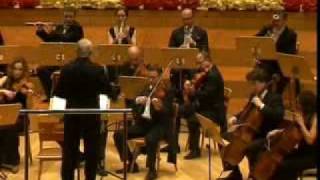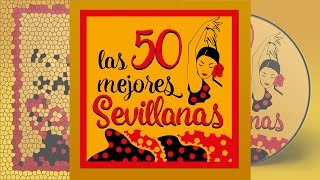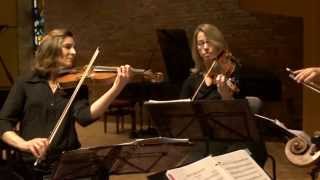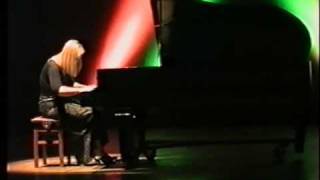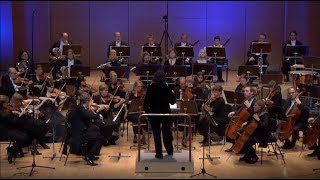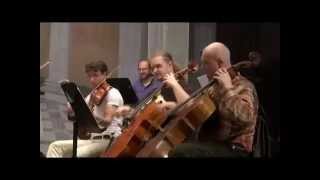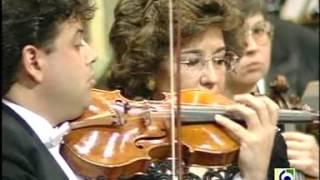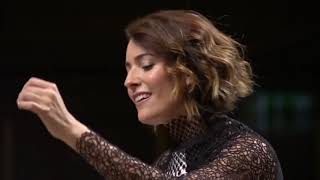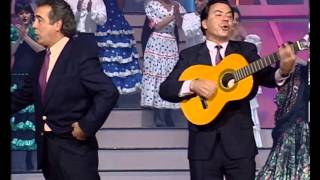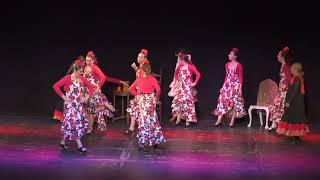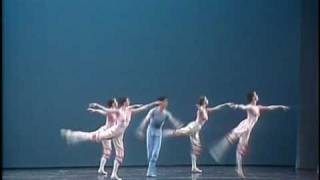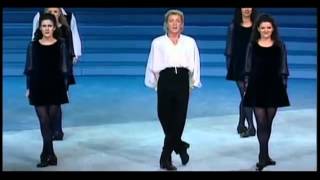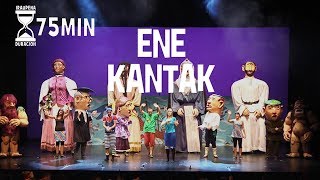Republic Day is commemorated on April 14.
On April 14 the April Fair (or Seville Fair) begins.
Recommended music videos for initiation to classical music
Hymn of Riego is the name given to the anthem sung by the flying column of Lieutenant Colonel Rafael del Riego after his insurrection against the King of Spain, Fernando VII, on January 1, 1820 in Las Cabezas de San Juan (province of Seville), whose text is by Evaristo Fernández de San Miguel and music by an unknown author, although some versions attribute authorship to José Melchor Gomis . It was used as the national anthem of Spain during the Liberal Triennium (1820-1823), the First Republic (1873-1874) and the Second Republic (1931-1939), which even in exile maintained its use until its own dissolution. The version we offer today is the work of the Prague International Orchestra .
The April Fair or Seville Fair is a spring festival that is celebrated annually in the city of Seville , where the public meets in a large venue called Real de la Feria , with streets of ephemeral booths, decorated with lanterns, along the where horseback riders and carriages circulate and about 500,000 visitors pass through daily. It is celebrated one or two weeks after Holy Week and coincides with the bullfights in the Plaza de la Maestranza . It has a great economic and social impact on the city and is declared a Festival of International Tourist Interest .
Its origins are found on August 25, 1846 when two councilors, Narciso Bonaplata (Catalan) and José María de Ybarra (Basque), businessmen settled in the city, wrote a proposal that they took to the City Council requesting the celebration of an agricultural fair and livestock
Franz Joseph Haydn (1732-1809), Austrian composer whose brother Michael Haydn was also a notable composer, was one of the main pillars on which classicism was based (1750-1810). At six years of age he began his studies of harpsichord and violin. At the age of eight he was admitted as a choralist at St. Stephen's Cathedral in Vienna where he continued his musical studies. After changing his voice, he had to survive by working multiple jobs, while studying composition analyzing the works of Carl Philipp Emanuel Bach . He maintained a close friendship with Mozart and was Beethoven 's teacher. He laid the main foundations of the sonata form and the formal structure of the string quartet and the symphony. He died at the age of 77 in Vienna .
The catalog of Haydn's works . The works of Joseph Haydn are today classified according to the system created by Anthony van Hoboken and revised and completed by Robbins Landon and his wife Christa , which has been universally adopted, although it is now known that it does not accurately reflect the chronology and composition of the works. works, criteria used by Hoboken in the catalog. Each work is identified with a Roman numeral that corresponds to the category, which in most cases corresponds to a genre. Some categories have subdivisions, which are indicated with a lowercase letter and then an Arabic number appears that corresponds to the order of the specific work within the category. These figures are preceded by the word Hoboken (in memory of the catalog's author) and sometimes by Hob .
La Alondra String Quartet Op. 64. No. 53, Hob. III:83. Of the sixty-eight string quartets that Joseph Haydn wrote, this is one of the most popular; Its nickname, La Alondra , derives from the first movement and its beautiful melody that we offer today in interpretation of the female quartet Lark Quartet .
Aita Donostia , or José Antonio Donostia (in Spanish Father Donostia , 1886-1956) was a writer, composer, musicologist and organist from San Sebastian, who began his musical studies in 1896 when he entered the Lekaroz Seminary (Nafarroa) at the age of ten. ). In 1908, after becoming a priest, he expanded his musical training in Barcelona and in the 1920s and 21s he perfected them in Paris with Eugenio Cools . In 1932 he became a euskaltzain , that is, a member of the Royal Academy of the Basque Language (Euskaltzaindia). As a composer he produced abundant chamber music, organ pieces, numerous choral works, melodies and piano songs, which brought him well-deserved renown. As a folklorist he collected more than a thousand Basque popular songs.
A prelude is a short piece of music, usually without a particular internal form. While during the Baroque era it may have served as an introduction to successive movements of a work, it may also have been a stand-alone work during the Romantic era. It typically features a small number of rhythmic and melodic motifs of an improvisational nature that repeat throughout the piece. The prelude can also refer to an overture, particularly to an opera or oratorio.
The Basque Preludes , a collection of 21 preludes for piano, are examples of skillful and loose piano writing, without resorting to technical difficulties, "to say what I felt, that musical lexicon is enough." They clearly reproduce the popular melody, but "they are Basque particularly because I wanted to paint in them the Basque soul of those landscapes, of those people and towns." This descriptive intentionality was born from contact with the short pieces of Schumann and Grieg : «These two authors are not alien to the way in which I approach these "interiors" and "exteriors"».
Today we offer one of these preludes, “Children's Dance”, performed by pianist Ana Inés Agirre , professor at the National University of San Juan .
Recommended classical music videos
Ludwig van Beethoven (1770-1827) together with Bach and Mozart is part of the trio of giants of Western music. Born in Bonn , his father, of Flemish origin, tried to showcase him as a second Mozart , although it was a notable failure. Despite this, from the age of nine the organist Christian Gottlob Neefe captivated him with the study of Bach , whom he would always keep in mind. In 1787 he moved to Vienna with the intention of taking Mozart classes, but the death of his mother returned him to Bonn a few days later. And so after five years, he returned to Vienna where he was able to study with Haydn and Salieri . However, his profession as an excellent pianist could not be carried out due to deafness that attacked him the following year, leaving him completely incapable of this faculty.
The catalog of Beethoven's works . There are 138 musical works composed by Beethoven , arranged by numbers known as opus (“work” in Latin) or its abbreviation op. , assigned by the composer's publishers while he was alive. On the sidelines, there are another 205 works that do not have an opus number and that were published after the composer's death. These works were assigned WoO numbers (Werke ohne Opuszahl, "works without opus number"). This catalog was first produced by Georg Kinsky and Hans Halm (Das Werk Beethovens) in 1955.
Symphony No. 3 in E flat major, Op. 55, by Ludwig van Beethoven , known as Eroica because Beethoven planned to dedicate it to his hero Napoleon Bonaparte , who embodied the ideals of the French Revolution , a hero who had defeated the totalitarian power of the Monarchy . But when Napoleon crowned himself emperor, Beethoven deleted Bonaparte 's name from the title page. The work is considered by many to be the dawn of musical romanticism, in contrast to the traditional classical symphony.
The symphony, today conducted by the French maestro Nathalie Stutzmann , is articulated in four movements: I (0´32´´) ALLEGRO CON BRIO .-. II (15'04'') MARCIA FUNEBRE (ADAGIO ASSAI) .-. III (31´56´´) SCHERZO (ALLEGRO) .-. IV (37´29´´) FINALE (ALLEGRO MOLTO–POCO ANDANTE–PRESTO)
Giovanni Battista Viotti , (1755 –1824) was an Italian violinist, composer and pedagogue. Son of an instrumentalist, Viotti took his first lessons with his father, who played the French horn. Appreciated as a violinist from a very young age, he was welcomed under the protection of the Dal Pozo della Cisterna princes who ensured that he studied with Antonio Celoniat . In 1782 he was appointed soloist at the Court of Marie Antoinette ; He later dedicated himself to teaching, composing and organizing concerts and in 1794 he was appointed artistic director and conductor at the King's Theater in London ; Four years later he returned to Paris , and three years later he returned to London where he died in 1824.
During the last 20 years of the 18th century he was considered the best violinist in Europe ; As a composer, he was a defender of the Italian instrumental tradition of the Rococo era , but open to romanticism.
La Marseillaise (“La Marseillaise”) is officially, since July 14, 1795, the national anthem of France . The anthem, originally titled Chant de guerre pour l'armée du Rhin ("War Song for the Army of the Rhine"), was written in 1792 by Claude Joseph Rouget de Lisle , captain of engineers of the Strasbourg garrison, as a Patriotic song of revolutionary France in its war against Austria. The Parisians welcomed it with great enthusiasm and baptized it La Marseillaise . It was banned during the Empire and the Restoration and became official again in the Third Republic . During 1940-1945 it was again banned, and its singing was considered a symbol of resistance to the German occupation and the collaborationist Vichy regime.
Today we offer the Tema e variazioni in Do maggiore by Viotti , which is a set of themes and variations on La Marseillaise performed by the Camerata Ducale with maestro Guido Rimonda as soloist and conductor.
Joaquín Turina (1882-1949) was a pianist, composer and conductor born in Seville and author of the most relevant works of Spanish Impressionism along with Falla and Albéniz . Since he was a child, considered a “prodigy,” he improvised virtuously on the accordion; although he began his piano studies at the same time as high school. In 1903 his parents died and he moved to Paris where he studied composition with Vincent D'Indy , earning a living with his piano performances. In 1913, when the First World War broke out, he returned to Madrid where he permanently established his residence. He was named full academician of the Royal Academy of Fine Arts of San Fernando , Favorite Son of Seville, in addition to receiving other important awards such as the Grand Cross of Alfonso X the Wise .
The Sevillian Symphony is a symphony by Joaquín Turina , composed from April 5 to July 3, 1920 and premiered on March 30, 1921 at the Teatro Real in Madrid by the Madrid Symphony Orchestra conducted by Fernández Arbós. Considered the first important piece of this genre produced in Spain in the 20th century . It won first prize in the Gran Casino de San Sebastián Composition contest and is structured in three movements: I (0´24´´) PANORAMA .-. II (8´25´´) BY THE GUADALQUIVIR RIVER .-. III (16'00'') PARTY IN SAN JUAN DE AZNALFARACHE.
Today we offer it in the version of the RTVE Orchestra conducted by the Valencian maestro Enrique García Asensio .
Igor Stravinsky (1882-1971) was a Russian pianist, conductor and composer; For many critics, the most important of the 20th century . In his long life he delved into different musical styles and genres from post-romanticism to serialism or jazz . He studied, among others, with Rimski Korsakov and worked for different genres and musical groups; but after meeting Sergei Diaghilev , founder of the Ballets Russes , he collaborated closely with him. Stravinsky also wrote for various types of ensembles and genres from operas and symphonies to small piano pieces and works for jazz groups, achieving great fame not only as a composer, but also as a pianist and conductor. Time magazine considered him one of the most influential personalities of the 20th century .
Pulcinella , the work that we present today in the form of a suite, was a ballet commissioned by Diaghilev who wanted a libretto and music based on a character from La comedia dell'arte of the 18th century ; so Stravinsky relied on the music (trios, operas and other materials) of Pergolesi to rewrite this music adapting it to more modern forms. The ballet, which premiered on May 15, 1920, with costumes and sets designed by Picasso , was a great success; In 1922 Stravinsky decided to extract a Concert Suite , to which in 1949 he made some small revisions whose version is offered to us today by the maestro Alondra de la Parra (1980), an internationally famous Mexican orchestra conductor; currently head of the Queensland Symphony Orchestra , Australia.
Recommended music videos for all tastes
Los del Río is a Spanish musical group made up of Antonio Romero Monge (1948) and Rafael Ruiz Perdigones (1947), residents of the Sevillian town of Dos Hermanas . They came together in 1962, when they were fourteen years old, to participate in the program " Ronda del Domingo " (Radio Sevilla, Cadena SER) and it was in 1965 when they appeared for the first time on national television and made their debut in Madrid in the most popular flamenco tablaos in Madrid. The time. Their greatest success would come in 1993 when they composed Macarena; The song became a social phenomenon that would end up crossing borders and generations, breaking all imaginable records. In 1996 it remained number 1 on the Billboard chart for 14 consecutive weeks.
The success of " Macarena " was welcomed in the largest world events; Bill Clinton used it in his campaign for the presidency of the United States , the Atlanta Olympic Games , the NBA Finals and that same year they responded to the call of Pope John Paul II to perform at the Christmas Concert in Vatican City . In 2021, the North American magazine Billboard ranked it number 7 in the top 100 best songs of all time.
Today Los del Río offer us the song Sevilla has a special color composed by the Andalusian singer and composer Romero San Juan (San Juan de Aznalfarache 1948-2005).
Norah Jones (New York, March 30, 1979) is an American singer, songwriter, pianist and actress. Together with his mother, he lived in New York until he was four years old. Then, they moved to Grapevine (Texas), where he stayed until he was twenty. Their debut album went on sale in February 2002, without massive campaigns; Despite which, by the fall it had already surpassed one million copies sold. It also went platinum in the Netherlands, Australia, Portugal and Hong Kong ; double platinum in Great Britain, Ireland and Singapore ; and quintuple platinum in New Zealand . Winner of nine Grammy Awards, she has sold more than 40 million records as a singer. His music combines elements of jazz, blues, soul, country and pop .
OneRepublic is an American pop rock band formed in 2002, in Colorado Springs , Colorado, by singer Ryan Tedder and guitarist Zach Filkins . In late 2003, he signed with Velvet Hammer . In 2007 he released his debut album, Dreaming Out Loud ; Their first single, " Apologize ", became a huge international hit, reaching number one in sixteen countries and, earning them a Grammy Award nomination. The second single, " Stop and Stare ", reflected the success of its predecessor. The single " Counting Stars " managed to enter the " top five " in Australia, Canada, Germany, Ireland, New Zealand, the United States and the United Kingdom . It also peaked at number 2 on the Billboard Hot 100 chart.
Demi Lovato (1992) is an American professional singing, acting and songwriting celebrity; he founded, together with Nick Jonas , the record label Safehouse Records . In her acting career, Lovato started in the children's television series Barney and Friends during her childhood. She received her breakthrough role as Mitchie Torres in the Disney Channel television movie The Final Jam (2010) and later, starred as the title character of Sunny , Star Wars. As a singer he has received numerous important awards. Outside of the entertainment industry, Lovato is an icon of the LGBT community. In 2014, she became the face of the American Marriage Equality Campaign . In May 2021, she announced that she is gender non-binary .
Recommended peculiar videos
The sevillanas , formerly called seguidillas sevillanas , are a typical music and dance from Andalusia , especially from Seville, Huelva and Cádiz , danced in pairs and of a festive nature. The music has its origins in the La Mancha seguidilla , from which it inherits the structure but, due to contact with other music from Andalusia , its sound has become "aflamenco". As for the dance, which would be added later, it takes their movements from the bolero school . They are not a style of flamenco per se, because their dance is choreographed and their lyrics have been simplified to accompany the dance, although they do bring together various aesthetic elements of flamenco . The sevillanas are always performed in series of four and are composed of a simple seguidilla of four verses and a chorus of three.
Symphony No. 73 in D major, Hoboken I/73 is a symphony by Austrian composer Joseph Haydn written in 1782 and popularly known as The Hunt because the last movement of the symphony uses horn calls, which are They are easily recognized as hunting grounds. The video we present today is a choreography of the first section of the fourth movement of said symphony staged by the Nederlands Dans Theater directed by Jiří Kylián (1947), a Czech choreographer living in the Netherlands .
Ein Sommernachtstraum (A Midsummer Night's Dream) is a musical work written by composer Felix Mendelssohn , based on the play of the same name written by English playwright William Shakespeare . Mendelssohn composed the musical work at different times in his life. Between July 8 and August 6, 1826, when his career was beginning. The concert overture op. 21 premiered in Szczecin on 20 February 1827. In 1842, years before his death, he wrote the incidental music (op. 61) for a production of the play, in which he incorporated the existing overture; incidental music includes the famous Wedding March .
Today the Ballet de l'Opéra National de Paris offers us the choreographed Act II
Riverdance is a famous theatrical performance of traditional Irish music and dance created by musician and composer Bill Whelan ; features Irish dance champions Jean Butler and Michael Flatley . The original idea was to cover the intermission of the Eurovision Song Contest held at the Point Theater in Dublin. Shortly after, the producing couple, John McColgan and Moya Doherty , premiered the show in Dublin on February 9, 1995. Since then, the show has performed in 450 venues around the world and has been seen by over 25 million of people, becoming one of the most successful dance productions in the world. Today we offer its final part.
Recommended music videos for children
Various Wikipedia articles have been used to write these texts.
The texts of Videomusicalis are written in Basque, Spanish and English.





